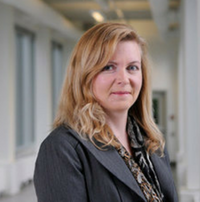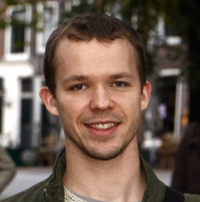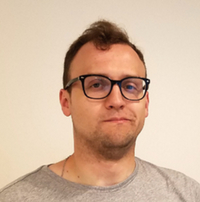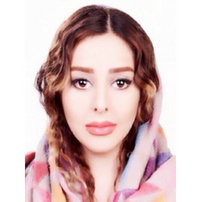Day 2 :
- Plenary Sessions
Location:
Session Introduction
Marina L Gavrilova
Full Professor, University of Calgary, Canada
Title: Machine Learning in KINECT Image Processing for Biometric and Medical Applications
Time : 10:00-10:45

Biography:
Marina L. Gavrilova is a Professor in the Department of Computer Science, University of Calgary, a Head of the Biometric Technologies Laboratory and a Board Member of ISPIA. Her publications include over 300 journal and conference papers, edited special issues, books and book chapters in the areas of image processing, machine learning, biometric and online security. She has founded an international conference series with LNCS/IEEE, co-chaired a number of top international conferences, and is Founding Editor-in-Chief of LNCS Transactions on Computational Science Journal. She is on the Editorial Boards of the Visual Computer, International Journal of Biometrics, and six other journals. She has given over 50 invited lectures and tutorials at major scientific gatherings and industry research centers, including Stanford University, SERIAS Center at Purdue University, Microsoft Research USA, Oxford University UK, Samsung Research South Korea, and others. She has a number of awards, professional designations and media apeparances.
Abstract:
Rapid development of machine learning methods opened the door to a new class of fast and reliable identity management solutions, and forever changed the research landscape. One of the applications where benefits of using machine learning methods are on the full display is in image and video processing. This invited lecture will discuss recent trends, state-of-the-art methods and applications of machine learning in security and medicine. Traditional definition of biometric security research is recognizing someone’s identity from collected biometric data, which includes physiological, behavioural, soft, or social traits. Physiological features can be often collected visually (facial image, ear, iris etc) or through some specialized devices, such as infrared sensors, remote temperature measuring devices, and so on. Behavioural characteristic include the way a person walks (gait), the way person talks (voice), the way person writes (typing patters, keystroke pressure) etc. Soft biometrics include easily collected but not so unique data, i.e. age, gender, height, weight etc. Area where the development of new technologies can have a very tangible effect on society is security and medicine. It is generating a lot of interest and getting traction in biometric research, as well as in related fields looking into human interaction, physiological studies, user profiling, pattern recognition, authorship identification and collective intelligence. This lecture outlines one of the first studies that looks at integrating KINECT sensor image and video processing based on a human gait with activity and emotion recognition. Applications and impact on patient physiohterapy rehabilitation through continuous progress tracking and visual data analytics are also discussed.
Networking & Refreshment Break: 10:45-11:00
Awane Jones
CEO of Phenomena, Canada
Title: Entertainment and the future of virtual reality
Time : 11:00-11:45

Biography:
Awane Jones is a CEO of Phenomena a technology and creativity company that develops Immersive Adventures. He is the President of Zone3 (VR) and the founder of 'Merchlar', a company that pioneered the Augmented Reality (AR) and Virtual Reality (VR) sector in Canada. A Co-Founder and former partner at 5thWall agency and the Montreal Chapter President of the VR/AR Association. He is also a bilingual keynote speaker and have presented at several international conferences including SXSW, C2, G20, Capital Innovation Défi MTL etc. His award-winning agencies, have built immersive experiences for a number of high profile global brands such as Universal Pictures & Twitter. Considered a thought leader in the field of AR & VR, he writes a technology blog on Huffington Post.
Abstract:
We’re witnessing the dawn of a new era in media. Soon, virtual/augmented/mixed reality technologies will reshape how we interact with content and each other. Today, however, these emerging technologies are characterized by solitary, in-home experiences for early adopters. To become truly meaningful, VR must get out of the basement and into the streets.
In this talk, as pioneer in the field AR&VR will be speaking on Location Based Entertainment and the future of these technologies.
- Sessions: Computer Vision & Pattern Recognition | Imaging and Image Processing | Visualization & 3D Printing | Human-Computer Interaction | 3D Web Technology

Chair
Marina L Gavrilova
University of Calgary, Canada
Session Introduction
Evgeny Rodygin, Roman Sementsov
Graphics Developer, Artec3D, Russian Federation
Title: Realtime processing of huge 3D data in web browsers
Time : 11:45-12:20

Biography:
Evgeny Rodygin is 3D graphics developer in RnD department at Artec3D Company. His primary interests are 3D graphics, 3D Engines Architecture and Artificial Intelligence. For almost five years he was developing a complex WebGL environment called Blend4Web and now he works on a web-based geometry-editing application for 3D scanned data.
 Roman Sementsov
Roman Sementsov
Roman Sementsov is 3D graphics developer in RnD department at Artec3D. He has special interest in digital mesh processing algorithms. Roman also has experience in writing complex shaders, rendering engines, and lighting systems.
Abstract:
Realtime 3D mesh editing is a very computational heavy task in terms of both processing speed and memory consumption, especially if we speak about scanned geometry consisting of tens or even hundreds of millions of polygons. In order to move, delete and add vertices complex optimizing structures become a vital requirement. Not so long ago it has become possible to manipulate such data on desktop computers and this talk seeks to expand these boundaries even further and proposes approches to editing such data in web browsers which have made significant steps to improve stability and performance in recent years. The proposed methods combine the use of modern frontend API, server-side data preparation and computationally efficient algorithms for mesh processing
- Video Presentation
Session Introduction
David Wortley
Founder and CEO of 360in360 Immersive Experiences, UK
Title: Opportunities and challenges of 360-degree imaging technologies and immersive education
Time : 12:20-13:00

Biography:
David Wortley is an Founder and CEO of 360in360 Immersive Experiences, Futurologist, Keynote Speaker, Entrepreneur, Writer, Entertainer, Gamification Guru, 360 Video Pioneer, Thought Leader, Drone Pilot, Business Coach, Mentor, Facilitator, Early Adopter, Broadcaster, Photographer, Visionary, Philosopher, Pragmatist, Innovator, Optimist - these are the amongst the many roles and attributes he has experience of and passion for. He is the CEO and Founder of GAETSS (www.gaetss.com), a consultancy on the strategic use of Gamification and Enabling Technologies for the transformation of business and society. He is a recognised authority on the practical application of gamification and enabling technologies to address global challenges in areas such as health, environment and education. He is a serial technology innovator and has been a pioneer of emerging technologies for over 30 years. He is an expert advisor to the European Union and an accredited business mentor. His specialist expertise is in the commercialisation of disruptive digital technologies. He is a passionate user of wearable technologies for health and wellness applications and a Founding Council Member of the International Society for Digital Medicine (www.isdm.org.cn).
Abstract:
The consumerization and growing ubiquity of 360-degree technologies for capturing and publishing immersive images, videos and audio has created a series of disruptive opportunities and challenges for developers of immersive education solutions. This presentation looks at the latest developments in 360-degree and dependent technologies to reflect on the likely implications for the future of computer graphics and animation in education.
Lunch Break: 10:45-11:00 @ Foyer
Fatemeh Alijani
Architect, Zista D.S. Consulting Engineers, Iran
Title: Parametric architecture with software and impact on architectural design process
Time : 13:50-14:20

Biography:
Fatemeh Alijani is Architect and Head of Design department of Suha Company, Iran. She worked professionally with Zista Architctur Gurop in the design and 3D modeling of the building. She also Illustration artist worked professionally with number of company and adversting office.
Abstract:
In recent years, the study of exquisite geometry and its innovation has become an important issue in contemporary architecture. At the 21st century that is a new era for architectural design, computer softwares improved this theory of form-finding. The process of architectural design is semi-automatic or automatic. The designs offered to the architect by the softwares help her to find the suitable form. Parametric (component) form-finding uses variables along with a set of rules describing the defects and obstacles in shape and form in order to create three-dimensional shapes based on user data.The advancement of technology has offered creative methods for the design process to find a suitable form for the building. Using 3D design in massive volumes Not only does replace the geometric design process, but it also replaces the early stages of the design process. These methods has become so popular that parametric design can be seen in different areas such as architecture, urban design, and interior design. The ability of these methods in clearly expressing the complexity of the program is more obvious in bigger projects.
In parametric architecture, the building is influenced by both structural aesthetics and the design. In parametric design unlike the high-tech architecture structure is not the main element in architecture. Its technical implementation is compatible with aesthetics and performance Requires the use of appropriate tools .So the thought is raised In the interaction between computer tools and designers in the process of creativity with the help of computer and 3D design and parametric design.





